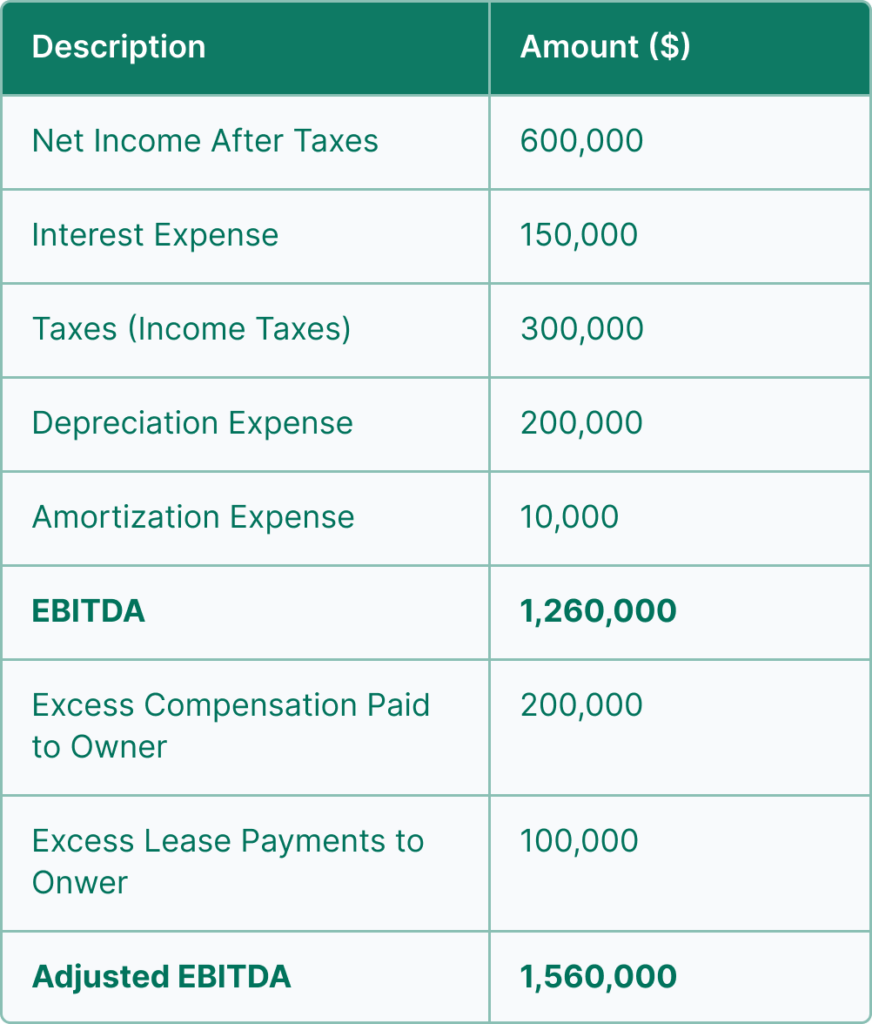Adjusted EBITDA Calculation
EBITDA (Earnings Before Interest, Taxes, Depreciation and Amortization) is a measure of earnings used to estimate the value of a business. To learn more about EBITDA, read EBITDA Example which displays and explains EBITDA via assumptions related to a manufacturing company. In this article, we are going to expand the assumptions for the same manufacturing company to show an Adjusted EBITDA calculation.
Assumptions for the Adjusted EBITDA Example
Here are the assumptions from the EBITDA Example article: “Let’s assume a manufacturing business’ tax return shows $8,000,000 in revenues. Interest expense on the tax return is $150,000, Depreciation is $200,000 and Amortization is $5,000. The tax return also shows taxable income of $900,000, and income taxes due are $300,000.” (Therefore, net income after taxes is $600,000.)
Let’s further assume the owner’s compensation as shown on the tax return is $350,000 but the company could hire a qualified CEO to run the company for $150,000. By calculation, the owner is receiving excess compensation of $200,000. Let’s also assume the business owner also owns, in a separate LLC, the facility the business occupies, and the company makes annual lease payments to the owner that is $100,000 higher than the fair market value of a property lease. Here’s how Adjusted EBITDA is calculated:
Adjusted EBITDA Calculation

Adjusted EBITDA Valuation
To arrive at a valuation estimate, a multiple is applied to Adjusted EBITDA. Our article, EBITDA Multiples by Industry, displays a chart of EBITDA multiples organized by company size and its respective industry. Referring to the chart, for a manufacturing business with $1,560,000 of EBITDA, it appears the appropriate multiple is about 4.5x. Therefore the computed valuation of this business is $7,020,000 ($1,560,000 x 4.5). Again, EBITDA Multiples by Industry provides a sample valuation of this same company without making the adjustments for excess compensation and excess lease payment to the business owner. The valuation in the article is $5,670,000, or $1,350,000 less if these add-backs are not accounted for. That’s because the two adjustments to EBITDA totaling $300,000 times the same multiple of 4.5x equals $1,350,000. Clearly it’s important to identify adjustments to EBITDA that can be justified to prospective buyers.
